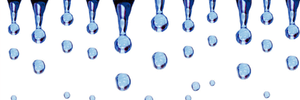Cardiovascular Studies
Breathing hydrogen-oxygen mixture decreases inspiratory effort
Hydrogen-oxygen mixture (H2-O2) may reduce airway resistance in patients with acute severe tracheal stenosis, yet data supporting the clinical use of H2-O2 are insufficient. The authors evaluated the efficacy and safety of breathing H2-O2 in acute severe tracheal stenosis. Thirty-five consecutive patients with severe acute tracheal stenosis were recruited in this prospective self-control study. Air, H2-O2 and O2 inhalation was given in 4 consecutive breathing steps: air for 15 min, H2-O2 (6 L per min, H2:O2 = 2: 1) for 15 min, oxygen (3 L per min) for 15 min, and H2-O2 for 120 min. The primary endpoint was inspiratory effort as assessed by diaphragm electromyography (EMGdi); the secondary endpoints were transdiaphragmatic pressure (Pdi), Borg score, vital signs, and impulse oscillometry (IOS). The concentration of H2 in the ambient environment was obtained with 12 monitors. Adverse reactions during the inhalation were recorded. The mean reduction in the EMGdi under H2-O2 was 10.53 ± 6.83%. The EMGdi significantly decreased during 2 H2-O2 inhalation steps (Steps 2 and 4) compared with air (Step 1) and O2 (Step 3) (52.95 ± 15.00 vs. 42.46 ± 13.90 vs. 53.20 ± 14.74 vs. 42.50 ± 14.12% for Steps 1 through 4, p < 0.05). The mean reduction in the Pdi under H2-O2 was 4.77 ± 3.51 cmH2O. Breathing H2-O2 significantly improved the Borg score and resistance parameters of IOS but not vital signs. No adverse reactions occurred. H2 was undetectable in the environment throughout the procedure. Breathing H2-O2 may reduce the inspiratory effort in patients with acute severe tracheal stenosis and can be used for this purpose safely.
Zhou ZQ, Zhong CH, Su ZQ, et al. Breathing hydrogen-oxygen mixture decreases inspiratory effort in patients with tracheal stenosis. Respiration. 2019;97(1):42-51.
Hydrogen gas inhalation after myocardial infarction
Hydrogen gas inhalation (HI) reduced infarct size and mitigated adverse left ventricular (LV) remodeling in a rat model of acute myocardial infarction (AMI). The authors designed a prospective, open-label, rater-blinded clinical pilot study in patients experiencing ST-elevated MI (STEMI). The 20 patients with an initial diagnosis of STEMI were assigned to either an HI group (1.3% H2with 26% oxygen) or a control group (26% oxygen). There were no HI-related severe adverse events. In the full analysis set, the cardiac salvage index as evaluated using cardiac magnetic resonance imaging at 7 days after primary percutaneous coronary intervention (PCI), showed no significant between-group difference (HI: 50.0±24.3%; control: 60.1±20.1%; P=0.43). However, the improvement from day 7 in the HI group was numerically greater than that in the control group in some of the surrogate outcomes at 6-month follow-up, including the LV stroke volume index (HI: 9.2±7.1 mL/m2; control: -1.4±7.2 mL/m2; P=0.03) and the LV ejection fraction(HI: 11.0%±9.3%; control: 1.7%±8.3%; P=0.11). The first clinical study has shown that HI during PCI is feasible and safe and may also promote LV reverse remodeling at 6 months after STEMI. The study was not powered to test efficacy and a further large-scale trial is warranted. (Clinical trials registration: UMIN00006825).
Katsumata Y, Sano F, Abe T, et al. The effects of hydrogen gas inhalation on adverse left ventricular remodeling after percutaneous coronary intervention for st-elevated myocardial infarction: first pilot study in humans. Circ J. 2017 Jun 23;81(7):940-947.



